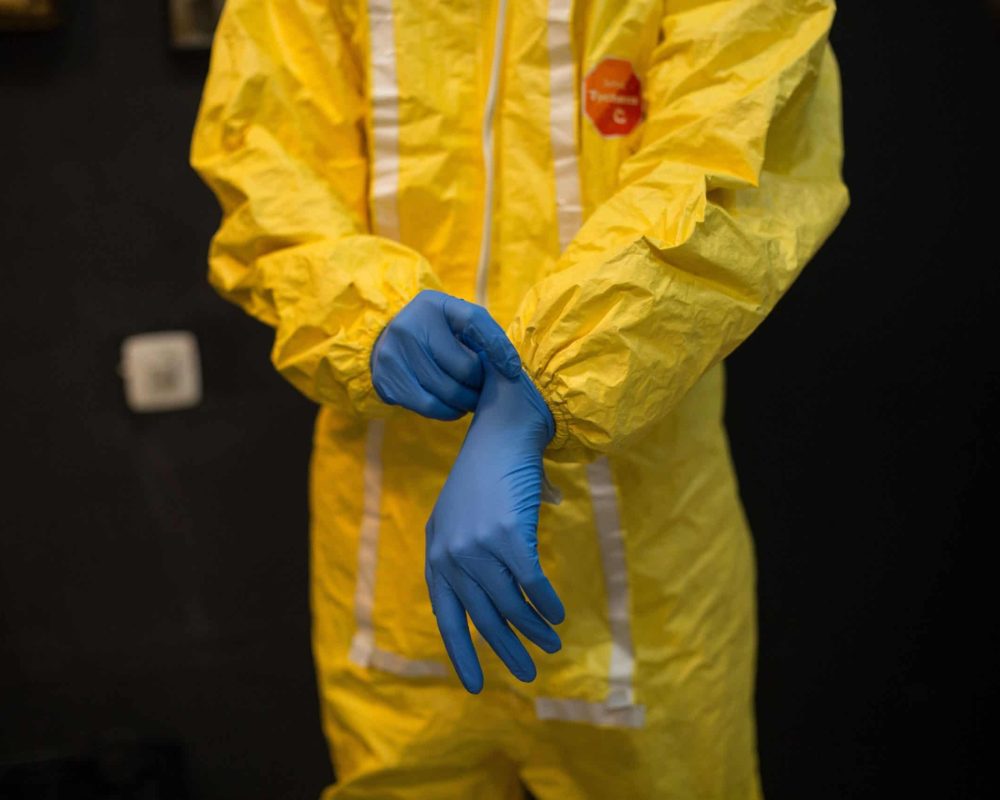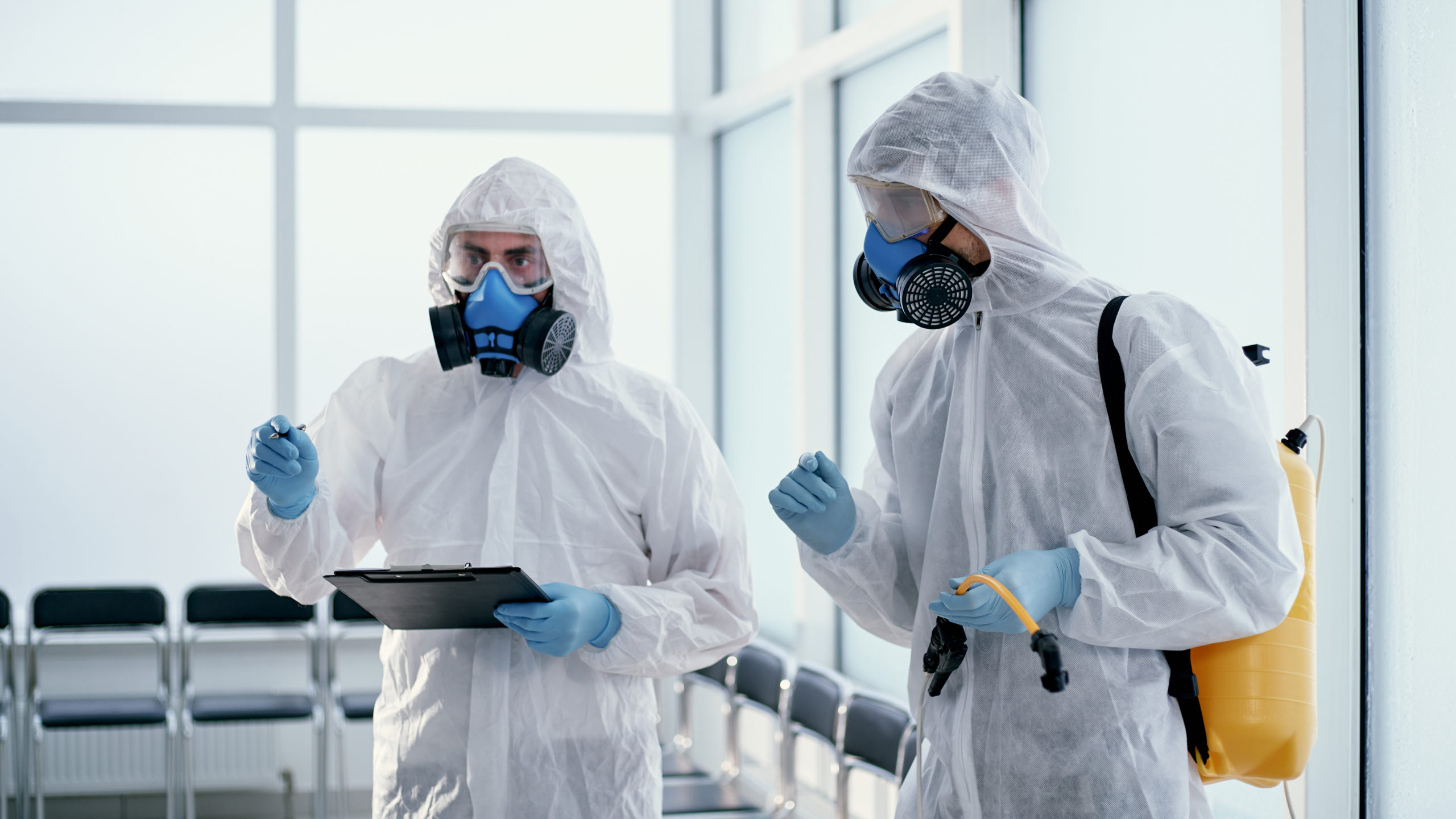Mold Remediation Providers: Safeguarding Your Property from Mold Damage
Specialist Biohazard Cleaning and Decontamination for Blood, Bodily Fluids, and Hazardous Materials
The possible health threats associated with direct exposure to biohazards underscore the critical demand for precise handling and detailed clean-up. As we browse the elaborate landscape of biohazard clean-up, understanding the nuances of laws, compliance, and the customized equipment at play ends up being essential in making sure a safe and extensive purification procedure.
Health Dangers of Biohazard Direct Exposure
Direct exposure to biohazards poses substantial health and wellness risks that can result in serious repercussions for communities and people alike. Biohazards incorporate a variety of biological compounds, consisting of blood, physical liquids, mold and mildew, microorganisms, infections, and other potentially transmittable materials. When individuals enter contact with these biohazards, whether through accidents, improper handling, or environmental exposure, they encounter the risk of having significant illnesses or illness.
Among the main wellness dangers connected with biohazard exposure is the transmission of infectious conditions. Bloodborne virus such as HIV, hepatitis B and C, and different microorganisms can be present in biohazardous products, posing a straight threat to human health and wellness. Breathing in air-borne biohazards like mold and mildew spores or coming right into contact with infected surface areas can additionally bring about respiratory problems, allergic reactions, and various other damaging health and wellness results.
Moreover, biohazard direct exposure can have long-lasting health and wellness implications, with some illness showing up years after the first call (Blood Cleanup). For that reason, it is critical to prioritize proper biohazard cleaning and purification to alleviate these wellness threats and ensure the safety of areas and individuals

Specialized Training for Biohazard Cleanup
When it pertains to handling biohazard cleanup successfully and safely, specialized training plays a basic function in guaranteeing proper purification procedures are adhered to. Biohazard cleanup needs details knowledge and abilities to successfully mitigate dangers connected with bloodborne pathogens, bodily fluids, and harmful products. Professionals trained in biohazard clean-up undertake rigorous direction on just how to safely deal with, eliminate, and deal with biohazardous materials to avoid contamination and direct exposure.
Specialized training for biohazard cleanup covers a variety of necessary subjects, consisting of correct individual protective tools (PPE) use, bloodborne pathogen awareness, decontamination techniques, and contaminated materials disposal procedures. People trained in biohazard cleanup are furnished with the needed proficiency to evaluate contamination levels, identify potential hazards, and implement suitable cleanup procedures in compliance with regulatory standards.
Continual training and education and learning are extremely important in the area of biohazard cleaning to remain updated on the current decontamination technologies, safety protocols, and laws. By spending in specialized training, biohazard cleaning experts can efficiently reply to emergency situation cleaning circumstances and protect both public health and the setting.
Value of Appropriate Decontamination Techniques
Making use of appropriate decontamination strategies is critical in biohazard cleaning to successfully eliminate hazardous materials and lessen health risks. Efficient decontamination not just ensures the elimination of visible traces of blood, bodily fluids, and other biohazards yet additionally targets invisible pathogens that may position serious health and wellness risks if not correctly gotten rid of. By following strict decontamination methods, trained specialists can dramatically reduce the threat of exposure to unsafe microorganisms, viruses, and germs that could result in conditions or infections.
Correct decontamination strategies entail using customized devices and anti-bacterials that are specifically made to neutralize biohazards properly. Comprehensive cleansing and sanitation of infected areas are vital to avoid the spread of microorganisms and guarantee a safe setting for residents. In addition, the proper disposal of biohazardous waste complying with purification procedures is important in avoiding contamination of various other surface areas or individuals.

Devices and Devices for Safe Cleanup
When dealing with blood, bodily liquids, or dangerous materials, biohazard cleansing professionals depend on specialized gear to minimize exposure dangers and completely decontaminate the damaged location. Additionally, biohazard cleansing packages consisting of anti-bacterials, absorptive products, and biohazard bags are used to securely consist of and dispose of polluted things.
Advanced cleaning tools like hospital-grade anti-bacterials, HEPA-filtered vacuum cleaners, and fogging makers are employed to sterilize surface areas and get rid of biohazards successfully. Specialized equipment such as sharps containers and biohazard waste disposal containers are made use of to safely handle sharp items and biohazardous waste products. By utilizing the best devices and devices, biohazard cleansing professionals can make sure a thorough clean-up procedure that prioritizes safety and security and decreases wellness threats for both employees and owners of the affected area.
Rules and Compliance in Biohazard Cleansing
Correct adherence to guidelines and compliance standards is extremely important in biohazard cleansing to ensure biohazard cleanup business the safety of both workers and the environment. Federal government agencies such as OSHA (Occupational Security and Health Administration) and the EPA (Epa) have established details standards for biohazard clean-up procedures to decrease health threats and ecological contamination. These laws cover a series of elements including the handling, transportation, and disposal of biohazardous products, along with the required training and safety devices see required for employees associated with the cleaning procedure.
Biohazard cleansing companies must stay current with these guidelines to ensure that their procedures fulfill the called for security standards. Failing to follow these laws can cause severe repercussions, consisting of fines, lawful action, and endangering the health and wellness of people and the setting. By adhering to strict laws and compliance measures, biohazard cleansing business can successfully reduce dangers and make sure a complete and safe cleanup process for all events involved.
Final Thought
In conclusion, biohazard cleaning and purification need specific training, proper strategies, and adherence to policies. Exposure to blood, physical liquids, and hazardous products presents considerable wellness risks, making it vital to use the best devices and tools for risk-free cleaning. By following rigorous procedures and standards, specialists can properly mitigate the dangers associated with biohazard direct exposure and make sure the safety and security of both themselves and others.
As we navigate the intricate landscape of biohazard cleanup, comprehending the subtleties of guidelines, compliance, and the customized tools at play becomes important in guaranteeing a safe and detailed purification procedure. (Blood Cleanup)
When it comes to taking care of biohazard cleanup efficiently and safely, specialized training plays an essential function in making certain proper decontamination procedures are followed.Using appropriate purification methods is critical in biohazard cleaning to effectively eliminate dangerous materials and reduce health and wellness dangers. Furthermore, biohazard cleansing sets including disinfectants, absorbent materials, and biohazard bags are used to safely contain and get rid of of infected products.
Government companies such as OSHA (Occupational Safety and Health Management) this page and the EPA (Environmental Defense Company) have established certain standards for biohazard clean-up procedures to decrease wellness dangers and environmental contamination.